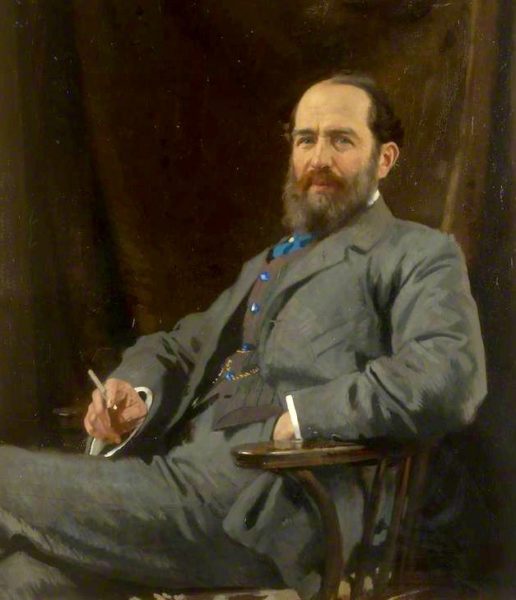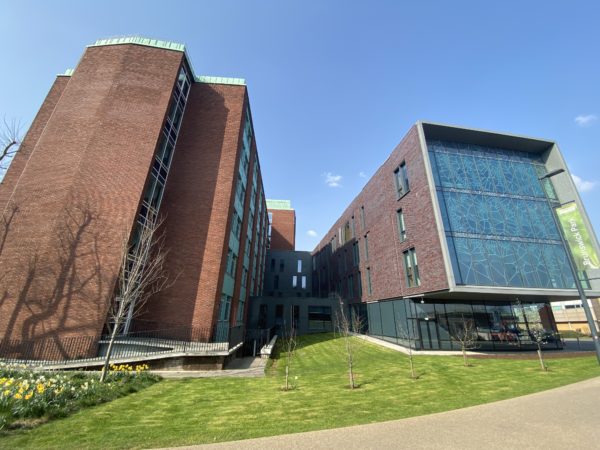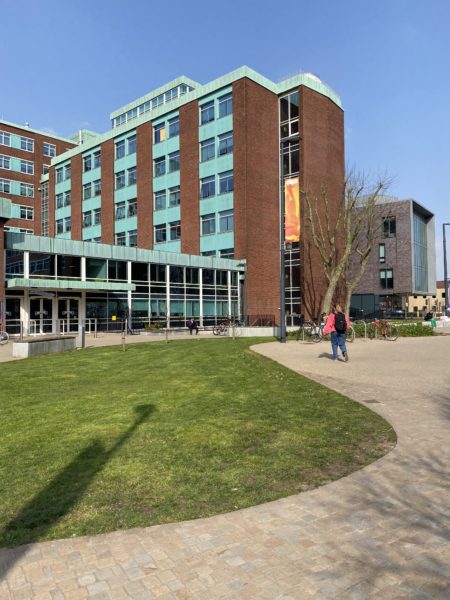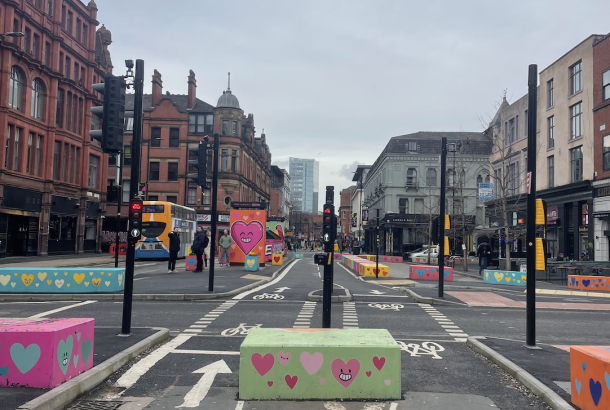The man, the myth, the building: Schuster

The next in our series exploring the people behind the buildings on campus is the Schuster Building, home to the University’s Physics and Astronomy department.
Situated in Brunswick Park on the edge of the main campus, the Schuster building is the centre of physics and astronomy at the University of Manchester. The building, which holds four large lecture theatres as well as workshop spaces and teaching laboratories, was designed by the Fairhurst Design Group and built in 1967.
It has been at the forefront of the university’s scientific teaching for the last 50 years, with the new annexe completed in 2017 to expand teaching space.
Departments represented across the seven floors include the theoretical, biological and nuclear physics groups, as well as laboratories researching condensed matter and particle accelerators.
Despite being one of the relatively newer buildings on campus, the name behind the building represents a key figure who worked in physics in Manchester, as do the names given to the four lecture halls: Rutherford, Bragg, Blackett and Moseley. With three Nobel prizes between the five men, the building certainly has a rich history of names to explore.

Sir Arthur Schuster was born in 1815 in Frankfurt, Germany, and studied in Geneva before following his family to Manchester in 1870.
Once here, he worked for the family textile business for a year before beginning his studies in mathematics at Owens College, where he also performed research with Henry Roscoe (who also has a UoM building in his name).
Schuster spent a year in Germany at the University of Heidelberg completing his PhD.
Upon returning to England in 1875, Schuster spent five years working on electricity in the Cavendish Laboratory in Cambridge. He returned to Manchester as the Beyer Chair of Applied Mathematics in Victoria University in 1881, after which he became the Langworthy Professor of Physics in 1888.
These roles allowed him to contribute significantly to the institution which preceded the University of Manchester, including campaigning for and opening a new laboratory in 1900, which was, at the time, the fourth largest in the world.
This is a testament to Schuster’s interest in administrative affairs, within which he took a leading role during his time in Manchester.
In terms of his own personal work and legacy, Schuster is perhaps best known throughout the physics community for his work on spectrum analysis, which he undertook during his time in Manchester in the 1880s.
The focus of both his work and his lectures was largely the problem of the discharge of electricity through gases until the late 1890s, when the discovery of X-rays solved many of his questions. His research also preceded the discovery of the electron, involved taking some of the first X-ray photographs and undertaking four separate solar flare expeditions.
Schuster retired from his university work and role as Langworthy Professor in 1807, after 26 years as a professor. He was thereafter appointed as Honorary Professor of Physics and retained his strong connection to Victoria University throughout his lifetime.
Retirement left Schuster with time to focus on administrative roles in the Royal Society, to which he had been elected as a Fellow in 1879. Within the Royal Society, Schuster held the roles of vice-president and foreign secretary between 1919 and 1924.

He was knighted in 1920, and has since been known as Sir Arthur Schuster, a marker of his contributions within his field.
Schuster died in 1934 in Berkshire, England. He left behind a legacy of numerous published papers, and was seen by his contemporaries as a distinguished researcher, teacher and advocate for physics.
The lives of the men who hold the names of the Schuster Building’s four lecture halls are also worth mentioning. The most notable is certainly Ernest Rutherford, who taught at Victoria University between 1907 and 1919. He was awarded the Nobel Prize in Chemistry in 1908 “for his investigations into the disintegration of the elements, and the chemistry of radioactive substances“, and much of his key work in physics took place within the Manchester laboratory founded under Schuster.
Two of the other lecture hall name holders are also Nobel Prize winners, the first of which was Lawrence Bragg, who worked as the Langworthy Professor at Victoria University between 1919 and 1937. Bragg won the Prize for Physics in 1915 alongside his father “for their services in the analysis of crystal structure by means of X-rays“. He is currently the youngest ever Nobel Laureate in physics.

Patrick Blackett also received the Nobel Prize for Physics in 1948 “for his development of the Wilson cloud chamber method, and his discoveries therewith in the fields of nuclear physics and cosmic radiation“.
He worked in Victoria University after being elected to the Langworthy Professorship, the role once held by Schuster, in 1937 and created an international research laboratory.
The final lecture theatre holds the name of Henry Moseley, who became a demonstrator in physics under Ernest Rutherford in Manchester in 1910, a position held by Schuster himself from 1873-1874. He went on to conduct important work on X-rays and the atom.
The academic work of all five men mentioned above is certainly inspiring, and exemplifies the rich history of excellence in Manchester’s Physics and Astronomy department.
Despite its relatively unbecoming place on the edge of campus and shockingly blue 1960s design, the Schuster Building holds within its name a great history of pioneering ideas and teaching.
So, next time you’re walking through Brunswick Park or studying inside one of its seven floors, take a moment to think back upon the history of those who played their part in founding the tradition of internationally renowned research here in Manchester.
You can learn more about the history of the buildings on the UoM campus by reading previous articles in the series here.







